
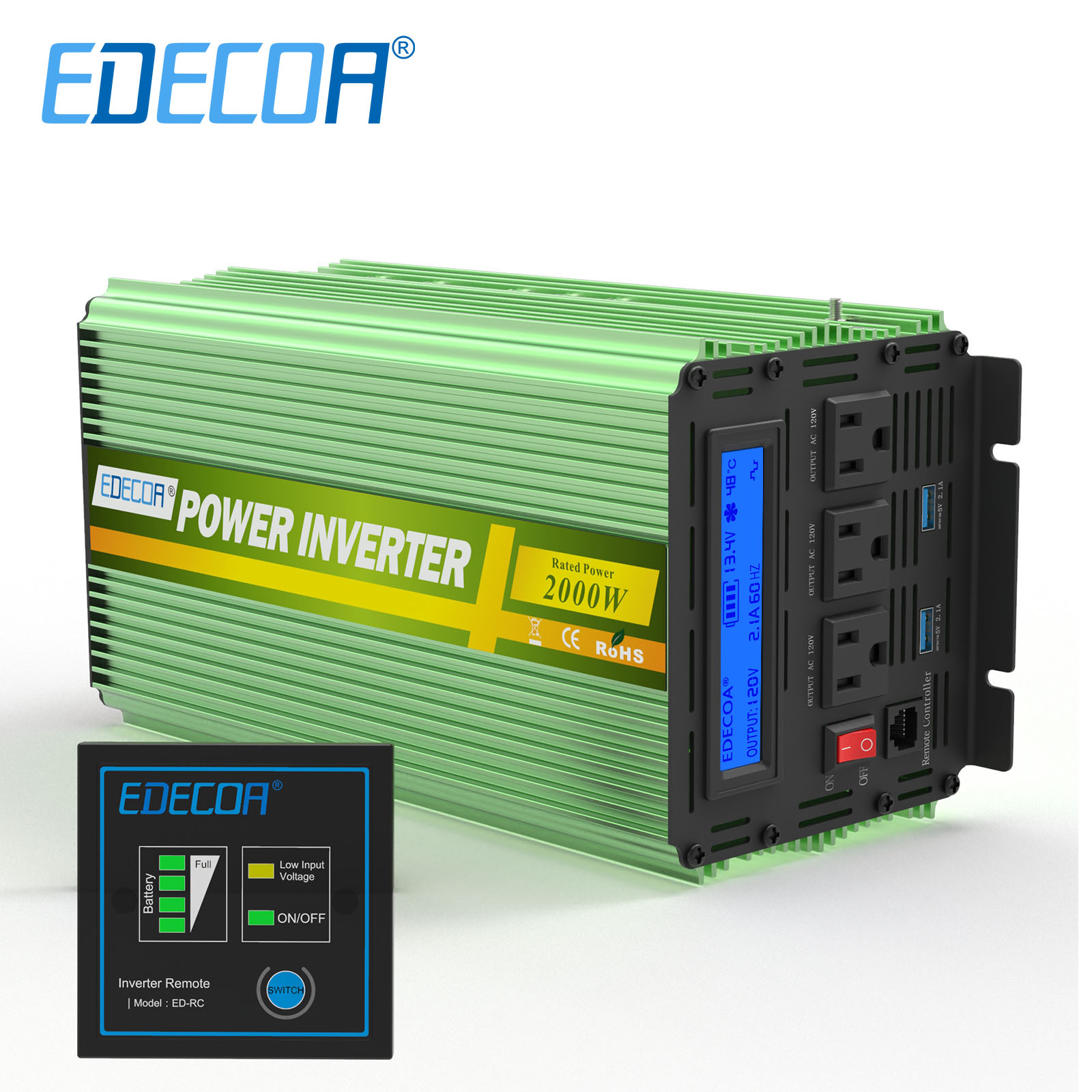
EDECOA RV Power Inverter 2000 W 4000 Watt 12V dc to 110V 120V ac Converter LCD
EDECOA Intelligent Inverter can supply 2000W continuous power/4000W max peak power. Connecting the inverter to battery, it can convert 12V DC to 110v 120V 60HZ AC.
Modified Sine Wave Inverter is reliable and economical for Resistive Loads.
If you need to run inductive loads or precision communication equipments, it is recommended to use a Pure Sine Wave Inverter in our store.
- Modified Sine Wave Inverter
- LCD Display V2.0
- Remote Control - With 4m Network Cable
- 2*USB Ports (2.1A 5V)
- US Sockrts - 110V/120V Devices
- Rugged Aluminum Housing
World Inverter Expert
- 15 years of brand
- Sold to 60 countries
- Exclusive Conversion Technology
1 Power Inverter
1 Pair of battery cables
1 Remote controller
1 Manual(IT/EN/DE/FR/ES)
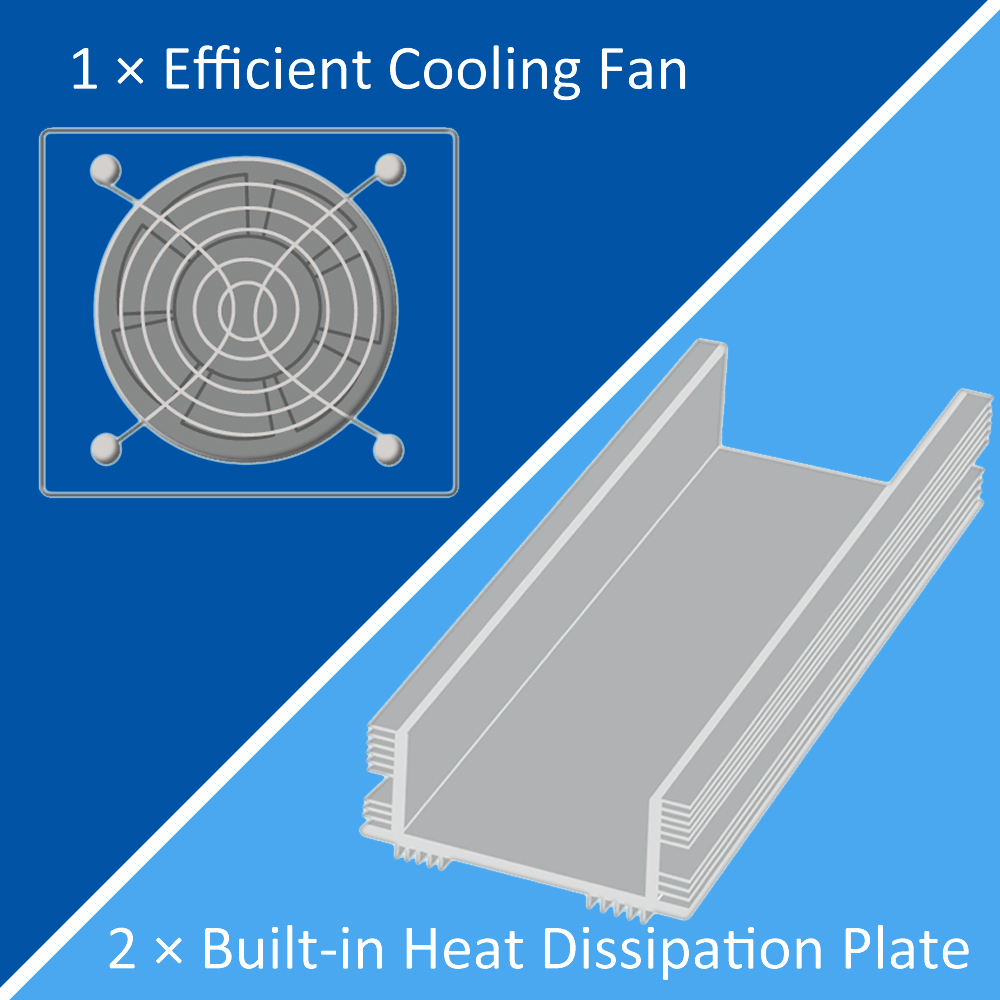
Variable Speed Fan
Reduce unnecessary waste of battery power and keep quite, fan won’t start until internal temperature is 45℃+. Above 75℃, the power inverter will stop working to protect machines.
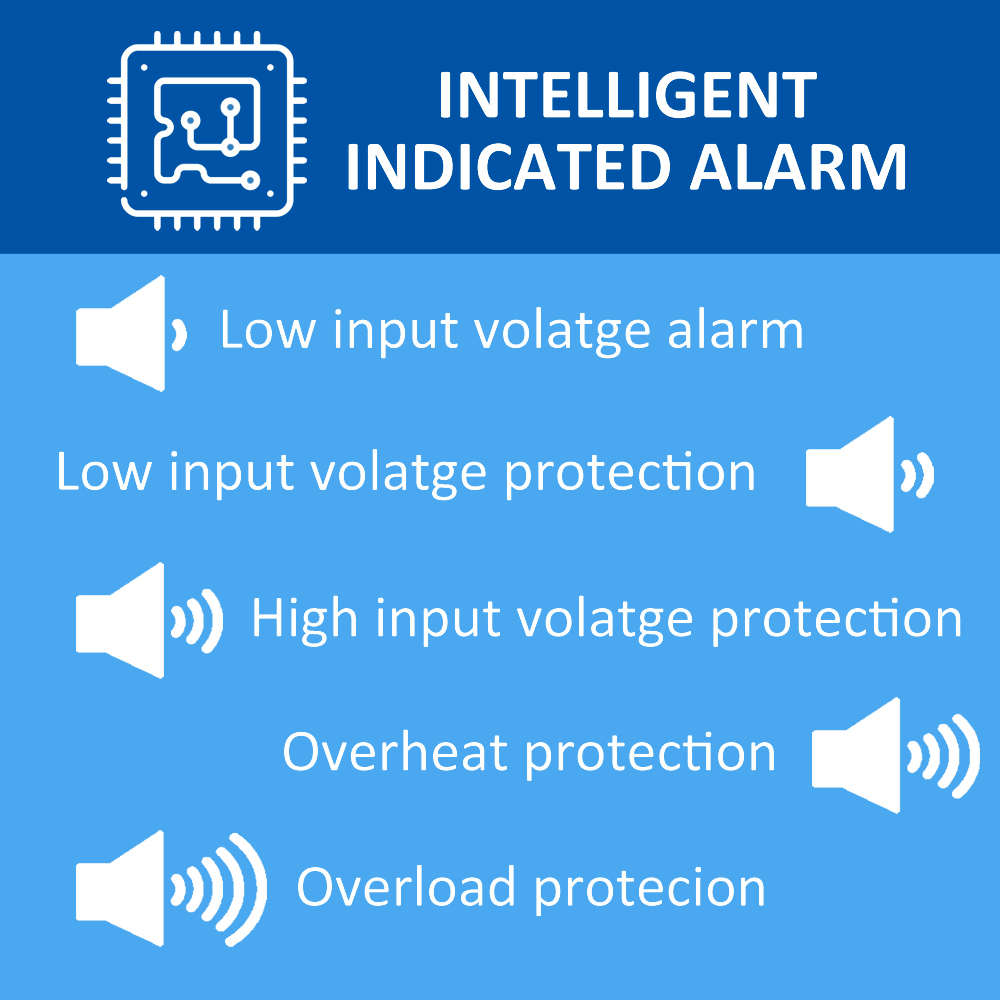
Intellegent Alarm
Smart buzzer designs to provide 5 alarm models for different situation. More easily finding out what is going on for your system.
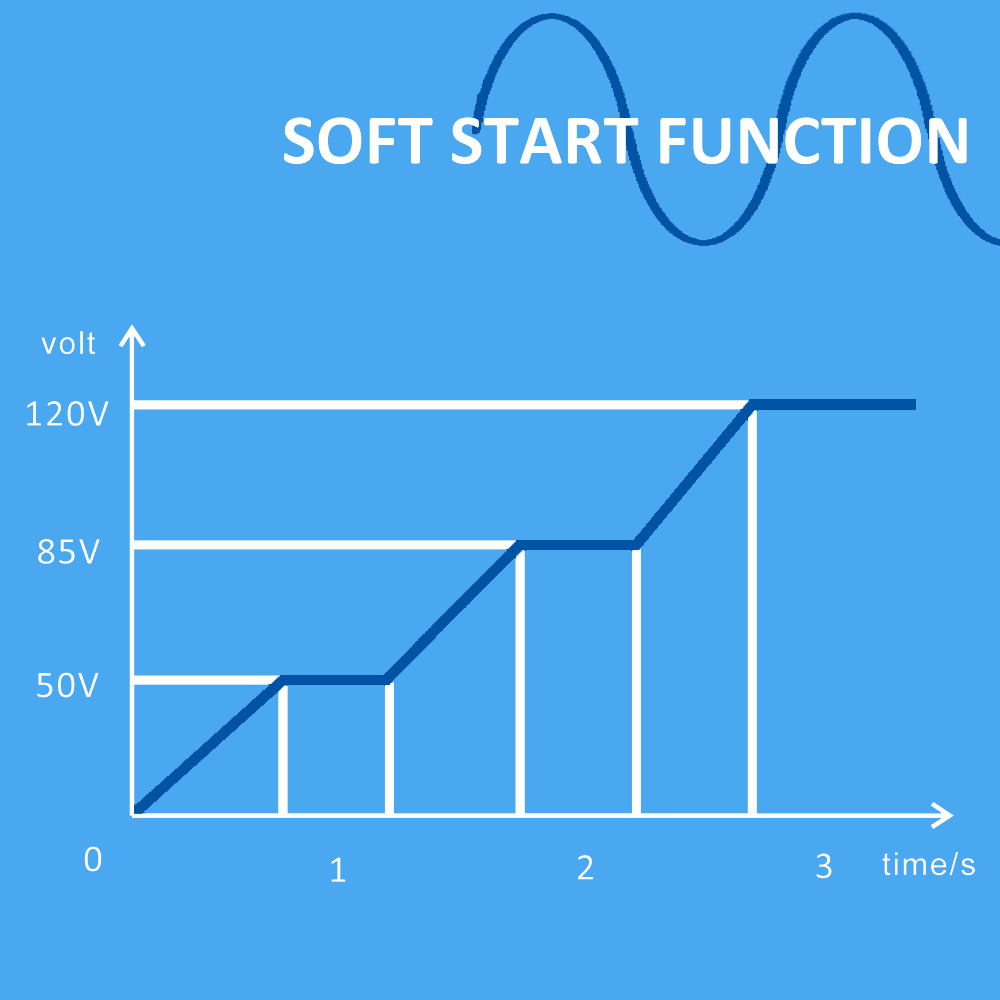
Soft Start Function
Suitable for RVs, solar systems, emergency power supplies, gardening work, RVs, boats, off-grid applications, etc.
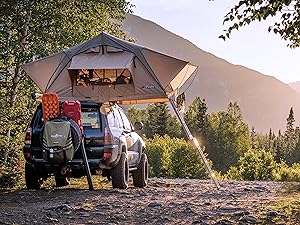
Camping
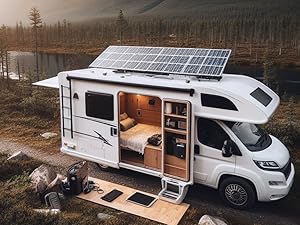
RV
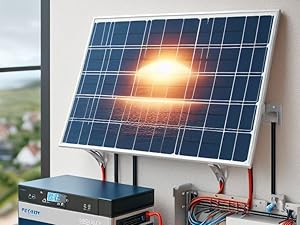
Soar System
Powers You Up Everywhere
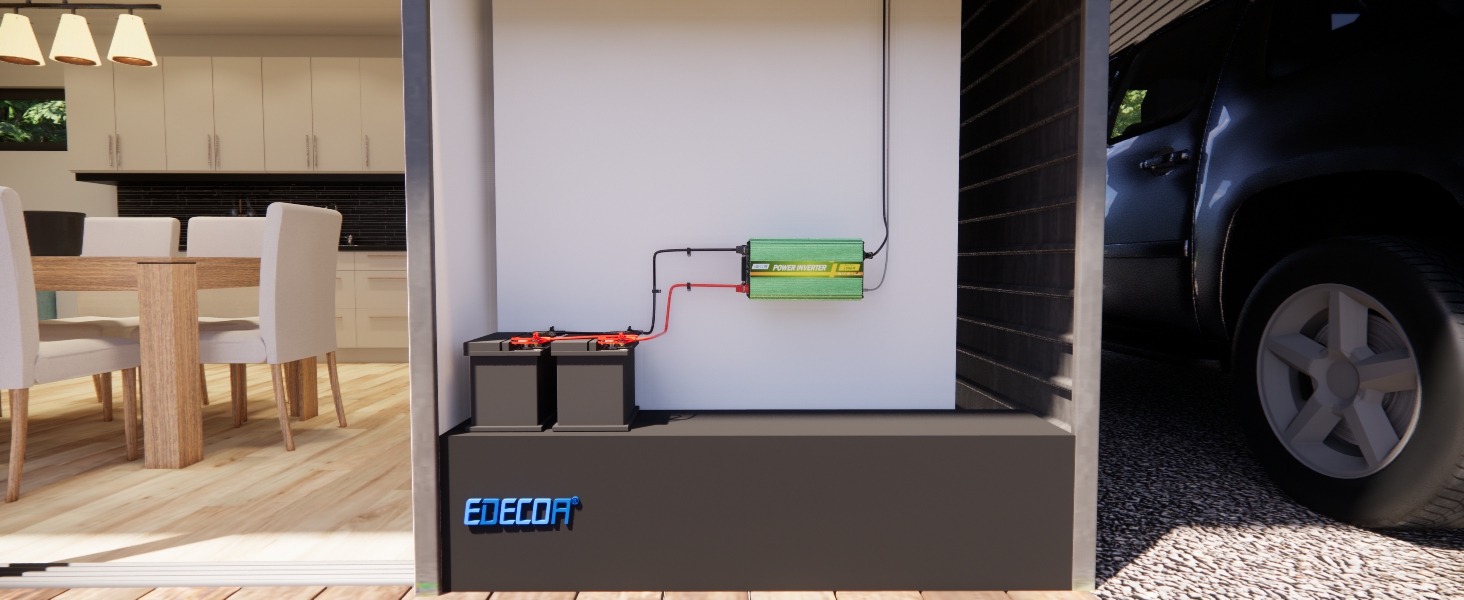
Features:
Anodized Aluminum Outcase: The anodized aluminum case is not only beautiful, but also has good heat dissipation performance, wear resistance, insulation and durability. Best choice for harsh environment.
Safety Cover: The flame retardant material cover protects you. To avoid any touching and short-circuiting of the input terminals;
85% Efficiency: The main control chip uses fast and stable MCU, intelligent control, real-time monitoring, 85% conversion efficiency at 80% working pressure;
0.8A Quiescent Current: Low no-load current doesn't draw too much current from your battery. The inverter may turn off completely after turning off the switch.
Multi-protection: low voltage, high voltage, overload, over current, short circuit, over temperature and galvanized isolation;
Variable Speed Fan: Reduce unnecessary battery waste and keep quiet, the fan will not start until the internal temperature is 45℃+. Above 75℃, the inverter will stop working to protect the inverters.
Automatic reset function: After the over-voltage cut-off protection or the low-voltage cut-off protection, when the input voltage is back to normal (12.6V), the inverter will automatically work again.
USB*2: Independent charger. Dual USB with 5V 2.1A output. Smooth use for devices with touch controls. The USB sockets are switched on regardless of whether the main switch is on or off.
Battery Computer
Updated version 2.0 multi function LCD screen, LCD display that shows input and output voltage and current, output frequency, inverter temperature and alarm conditions. Different alarms and working status also been displayed as well.
Battery Choice Tips:
Before you connect your devices, think about the battery capacity you need. A small battery cannot run a high wattage device.
For example, if you run an 800W heater for 2 hours, how many AH batteries should be used? Take a 12V battery as an example:
Rated wattage 800w/conversion efficiency of inverter (calculated at the lowest 85%)/battery voltage (12V)/ battery discharge coefficient 80%*working time (2 hours)=800W/85%/12V/0.8*2H=196AH
|
Maximum wattage of devices |
DC volt |
Battery Recommended |
Running Time |
|---|---|---|---|
| 3500W | 12V | 400AH | 1h 00min |
| 3000W | 12V | 360AH | 1h 03min |
| 2500W | 12V | 300AH | 1h 03min |
| 2000W | 12V | 240AH | 1h 03min |
| 1500W | 12V | 200AH | 1h 10min |
| 1200W | 12V | 120AH | 0h 53min |
| 850W | 12V | 100AH | 1h 02min |
| 600W | 12V | 80AH | 1h 10min |
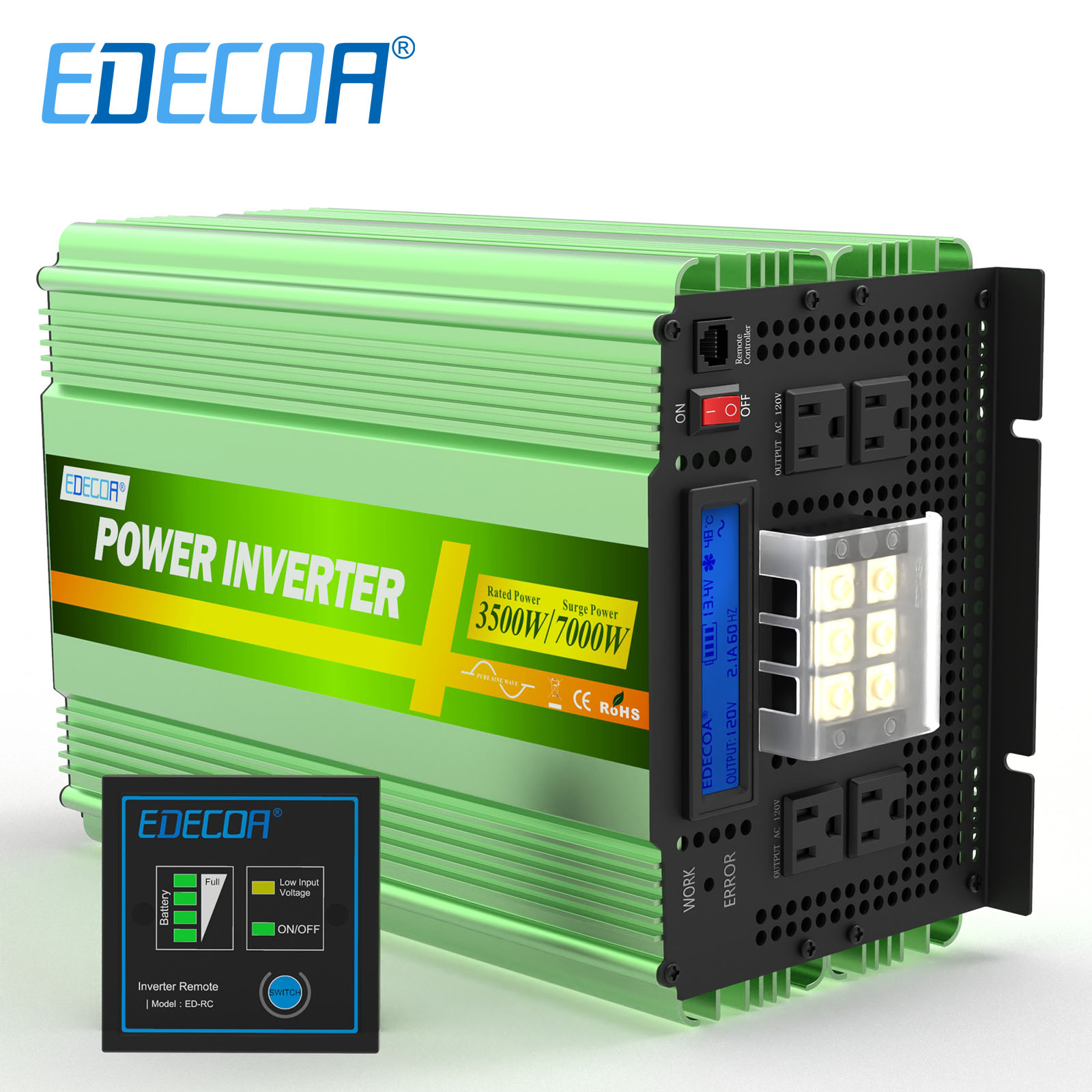 Inverter 3500W 12V 230V |
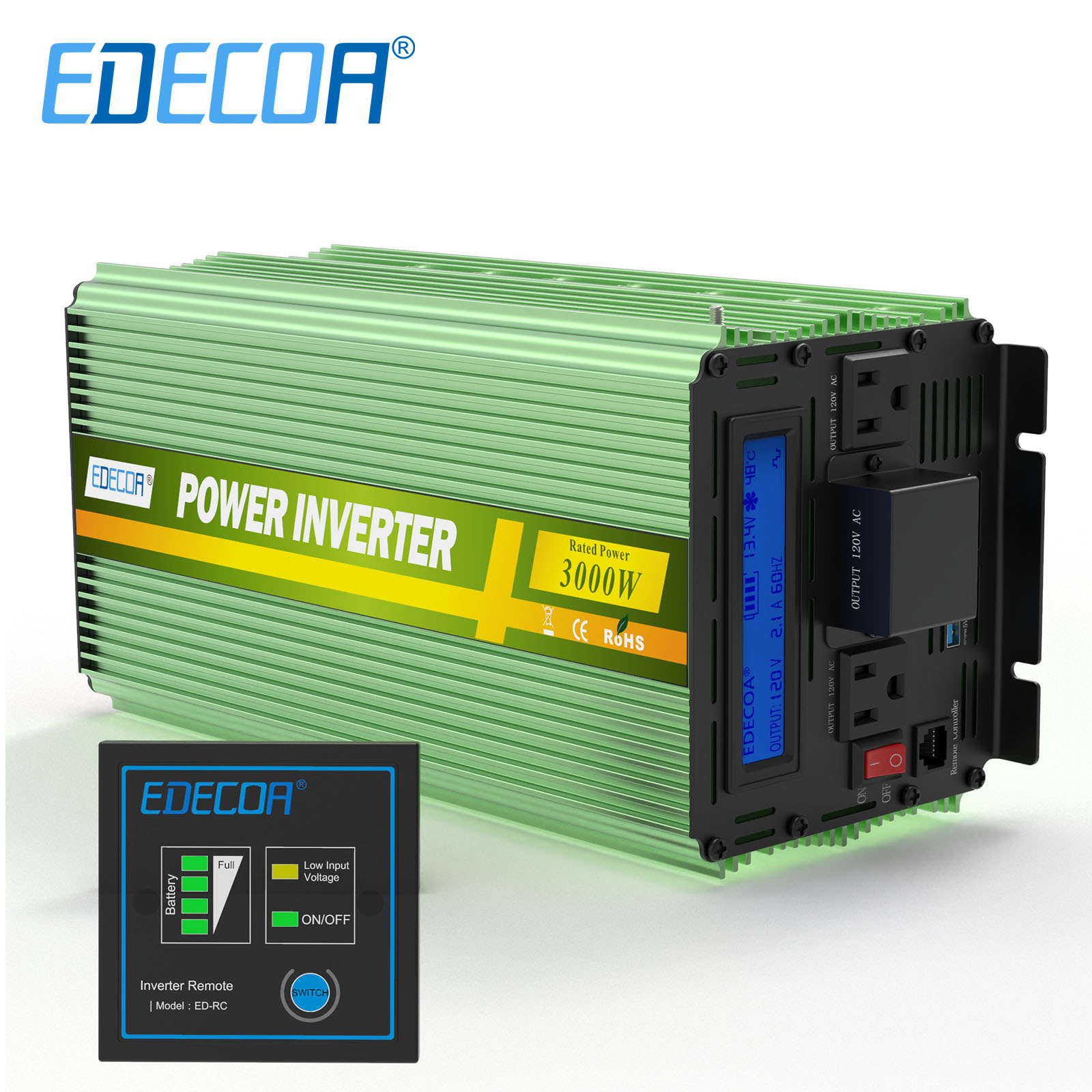 Inverter 3000W 12V 230V |
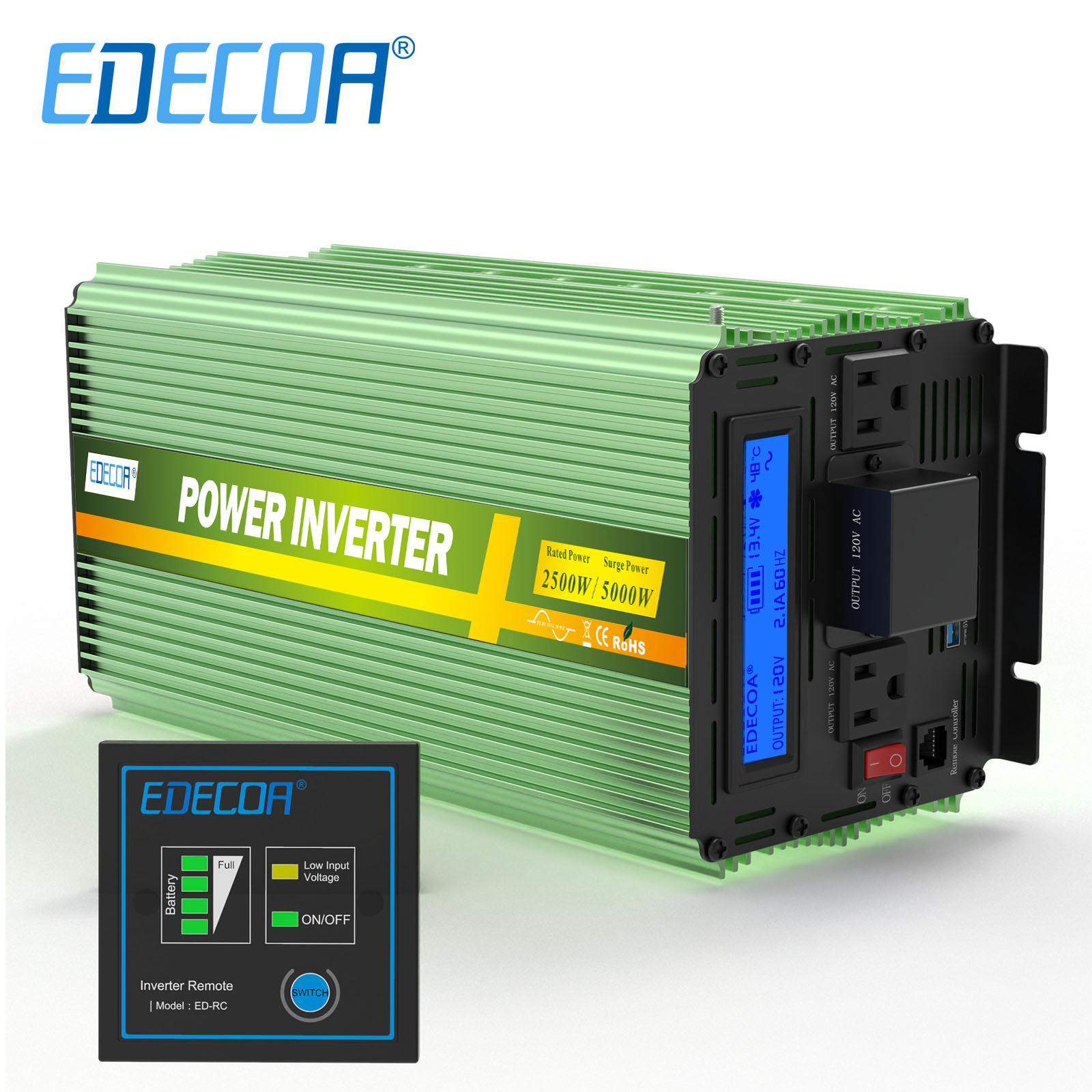 Inverter 2500W 12V 230V |
 Inverter 2000W 12V 230V |
|
|---|---|---|---|---|
| Output Waveform | Pure sine wave | Modified sine wave | Pure sine wave | Modified sine wave |
| US Socket | 2 | 2 | 2 | 2 |
| Remote Control | 1 | 1 | 1 | 1 |
| Continuous Output | 3500W | 3000W | 2500W | 2000W |
| Maximum Peak | 7000W | 65000W | 5000W | 4000W |
| Input Voltage | 12V | 12V | 12V | 12V |
| Output Voltage | 110-120V | 110-120V | 110-120V | 110-120V |
How to choose a Proper Inverter?
There are two types of Inverter, one being a modified sine wave inverter, the other a pure sine wave type.
For Inductive Load
If connecting with inductive loads (e.g. Microwave, coffee machine, k7 karcher power washer, Compressor, Water Pump, Saw, Drill, old CRT TV, Refrigerator, Ice conditioner, Air conditioner, Relays,Fluorescent lamp, Vacuum cleaner, smoke machine, random orbit sander, orbital polisher), please choose a PURE SINE WAVE inverter whose rate power is 3-7 times higher than the load's rate power. For example, for a 150w refrigerator(10 times), please choose a 1500w Pure Sine Wave inverter or higher; for a 800w air conditioner, please choose 2500w Pure Sine Wave inverter or higher.
For Resistive Load
If connecting with resistive loads (e.g. Kettle, Toaster, Shower, Computer, LED TV, Fan, Scanner, Fax machine, Duplicator, Sound system, Juice extractor, Heater, Electric cooker, crock pot), please choose either modified sine wave or pure sine wave inverter whose continuous power is a little higher than the load's rate power. For example, for loads near 700w, it's better to choose inverter with continuous power more than 800w.